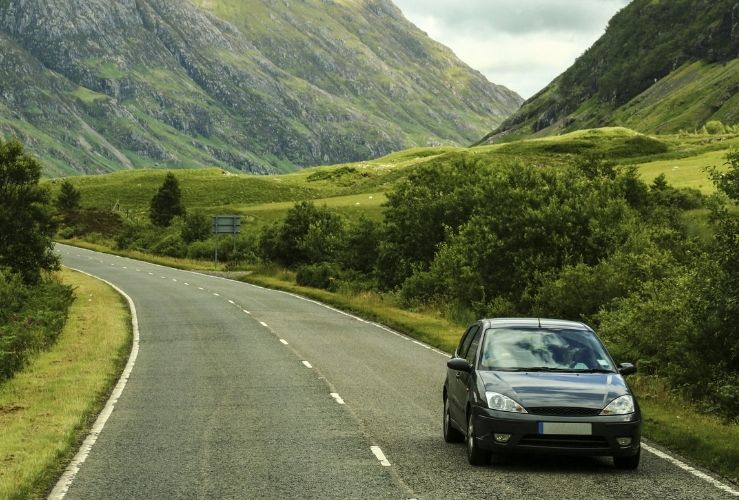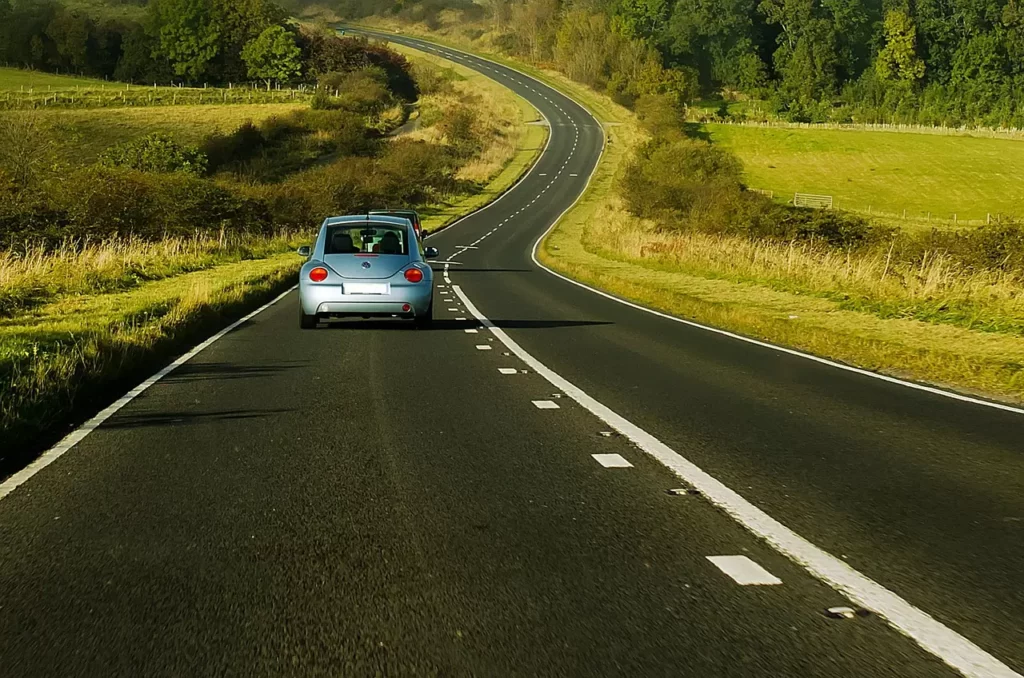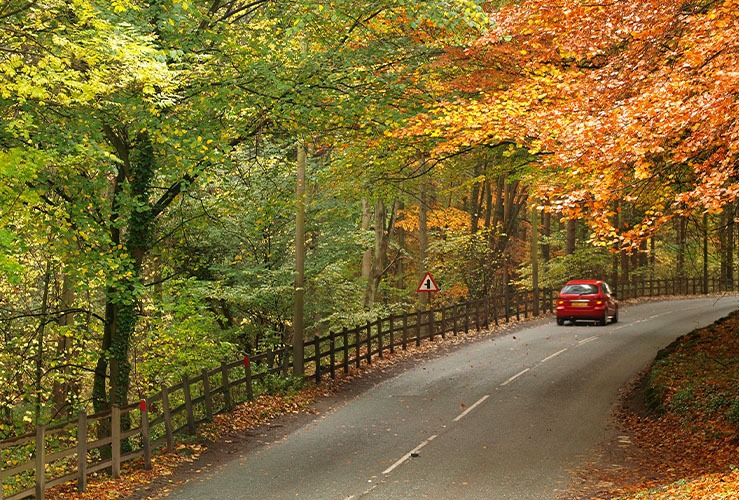Traveling in neutral for long distances is a bad practice due to several reasons. When your vehicle is in neutral, the engine disconnects from the wheels, leading to a lack of engine braking. This means you lose the ability to control your speed effectively, especially when going downhill.
Moreover, in neutral, your steering and braking systems become less responsive, posing a safety risk.
Additionally, driving in neutral hinders your ability to accelerate quickly if needed. It also puts strain on the braking system, potentially causing it to overheat.
In essence, traveling in neutral compromises your control, safety, and overall driving performance, making it an unsafe choice for long journeys.
Why is the Absence of Engine Braking a Concern for Long-Distance Drivers?

What Engine Braking Is
Engine braking, also known as compression release engine braking, is a technique where the driver uses the engine’s compression to slow down the vehicle without applying the brakes.
Unlike regular braking, which relies on friction between the brake pads and the wheels, engine braking takes advantage of the engine’s resistance when the throttle is released.
When you lift your foot off the accelerator, the throttle closes, creating a vacuum in the cylinders. This vacuum acts as a natural brake, slowing down the vehicle by reducing the amount of air and fuel in the combustion chamber.
The compressed air pushes against the piston, converting the energy into resistance and helping to control the speed of the vehicle.
Importance of Engine Braking for Controlling Speed
Engine braking plays an important role in maintaining control and stability, especially during downhill descents. It allows the driver to modulate speed without relying solely on the braking system, preventing it from overheating and reducing wear and tear.
This is particularly important on long journeys where constant braking can lead to brake fade and diminished braking efficiency.
The controlled slowing provided by engine braking is also beneficial in adverse weather conditions, such as slippery roads, where sudden braking can lead to skidding.
Additionally, engine braking is fuel-efficient, as it harnesses the vehicle’s kinetic energy to help slow it down.
How Traveling in Neutral Hinders Engine Braking
When a vehicle is in neutral, the transmission disengages the engine from the wheels. In this state, engine braking is virtually eliminated. Without the connection between the engine and the wheels, the natural resistance provided by engine braking is lost.
This lack of engine braking in neutral means that the vehicle is heavily reliant on the mechanical brakes to control speed.
As a result, the brakes have to bear the entire burden of slowing down the vehicle, leading to increased wear on the braking system and potentially causing overheating issues, especially on extended downhill stretches.
How Does Driving in Neutral Lead to a Loss of Control?
When you drive in neutral, it messes with how you control the car because the engine isn’t connected to the wheels. Steering becomes harder, and you depend a lot on the brakes, making it tricky to drive safely, especially during turns or on long trips.
Impact on Steering Responsiveness
When a vehicle is in neutral, the disengagement of the transmission from the engine compromises the power steering system’s effectiveness. Power steering relies on the engine’s power to assist in turning the wheels.
In neutral, this assistance is lost, resulting in increased resistance and reduced responsiveness when attempting to steer. The driver may find it challenging to make precise maneuvers, especially in critical situations, diminishing the overall control of the vehicle.
Impact on Braking Systems
Traveling in neutral places a significant burden on the braking system, as it becomes the primary means of controlling speed and stopping the vehicle.
Without the assistance of engine braking, the brakes have to work harder and for more extended periods, leading to increased wear and heat generation.
This heightened stress on the braking system can result in brake fade, reduced efficiency, and, in extreme cases, brake failure.
The compromised braking efficiency further contributes to the loss of control, particularly during extended drives and on steep descents.
How Control is Compromised in Neutral
Imagine driving downhill with the vehicle in neutral. As you approach a curve or need to adjust your speed, the lack of engine braking means you must rely solely on the brakes. This reliance increases the risk of the brakes overheating and losing effectiveness.
Furthermore, without the engine’s assistance, steering becomes less responsive, making it challenging to navigate the curves with precision.
The overall scenario illustrates how the absence of engine-related control mechanisms in neutral can lead to compromised steering, reduced braking efficiency, and an increased potential for accidents.
How Does Driving in Neutral Affect Acceleration?

Limitations in Acceleration in Neutral
When a vehicle is in neutral, the engine is disconnected from the wheels, and power transmission to the wheels is halted. This disengagement means the engine is unable to propel the vehicle forward efficiently.
In neutral, the engine lacks the mechanical connection needed to transfer power to the wheels, limiting the vehicle’s ability to accelerate effectively.
How Being in Neutral Affects the Vehicle’s Ability to Respond Quickly
In neutral, the engine is not engaged with the transmission, resulting in a delay in power delivery to the wheels when the driver accelerates. This delay diminishes the vehicle’s responsiveness and agility, impacting its ability to promptly react to changes in driving conditions or unexpected situations.
The absence of immediate power transfer can be particularly problematic during critical moments, such as merging onto highways or swiftly navigating through traffic.
Real-World Implications of Limited Acceleration
The limited acceleration in neutral has practical consequences for drivers. In situations where quick acceleration is required, such as merging onto a fast-flowing highway or overtaking, being in neutral can lead to a sluggish response. This not only poses safety risks but also contributes to traffic flow disruptions.
Additionally, in scenarios where swift acceleration is essential for avoiding obstacles or responding to rapidly changing traffic conditions, the inability to accelerate efficiently in neutral compromises the driver’s ability to make timely decisions and execute them effectively.
FAQ
Why is coasting a bad technique?
Coasting is a bad technique because it disengages the engine, leading to a lack of control over the vehicle. In this state, the driver loses the ability to utilize engine braking, impacting overall safety and responsiveness.
Why is clutch coasting bad?
Clutch coasting is discouraged as it involves disengaging the clutch while driving, severing the connection between the engine and wheels. This practice not only reduces control but also puts undue stress on the clutch components, potentially leading to premature wear and damage.
Is it OK to coast in neutral manual?
Coasting in neutral with a manual transmission is generally not recommended. It hinders engine braking, reducing control, and can lead to safety issues, especially during downhill descents.
Is it bad to coast in neutral automatic?
Coasting in neutral with an automatic transmission is not advisable. It limits control, hampers engine braking, and can contribute to accelerated wear on the braking system, compromising safety and overall vehicle performance.
Is it bad to roll down hills in neutral?
Rolling down hills in neutral is not recommended. It eliminates engine braking, increases reliance on the braking system, and may lead to brake overheating, compromising safety and potentially causing brake failure.
Is it better to coast in gear or neutral?
It is generally better to coast in gear because it allows for engine braking, aiding in speed control. Coasting in neutral diminishes control and responsiveness, posing safety risks, particularly during extended drives or challenging terrains.
Is it OK to push an automatic car in neutral?
Pushing an automatic car in neutral is acceptable for short distances. However, prolonged pushing in neutral can damage the transmission. Towing or using a dolly is preferred for longer distances.
Should I go into neutral at traffic lights?
It is not necessary to go into neutral at traffic lights. Modern vehicles are designed to handle idling efficiently, and shifting into neutral may decrease control and response time when it’s time to move.
Can you brake in neutral?
While it’s technically possible to brake in neutral, it is not recommended for regular driving. Braking in gear allows for engine braking, enhancing control and safety, especially during downhill descents.
Final words
Traveling in neutral for long distances is a risky choice that compromises safety and control. The absence of engine braking, the loss of control, challenges in acceleration, and the strain on the braking system collectively make it an unwise practice. To ensure a safer and smoother journey, it’s crucial to stay in gear, allowing the engine to play its vital role in maintaining control, responsiveness, and the overall well-being of your vehicle. Remember, keeping your car in the right gear is not just about moving forward but also about driving smart and safely.

